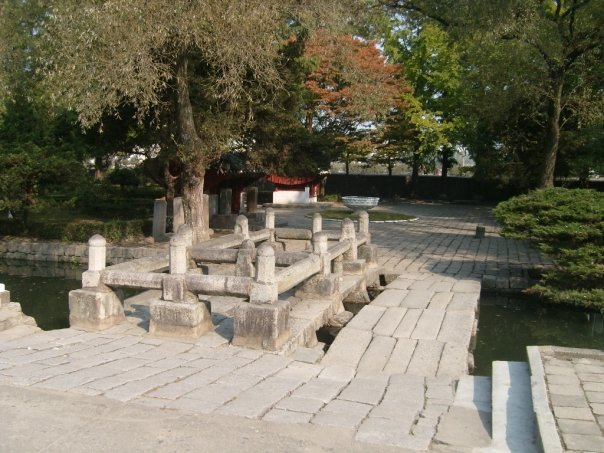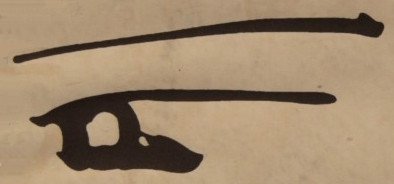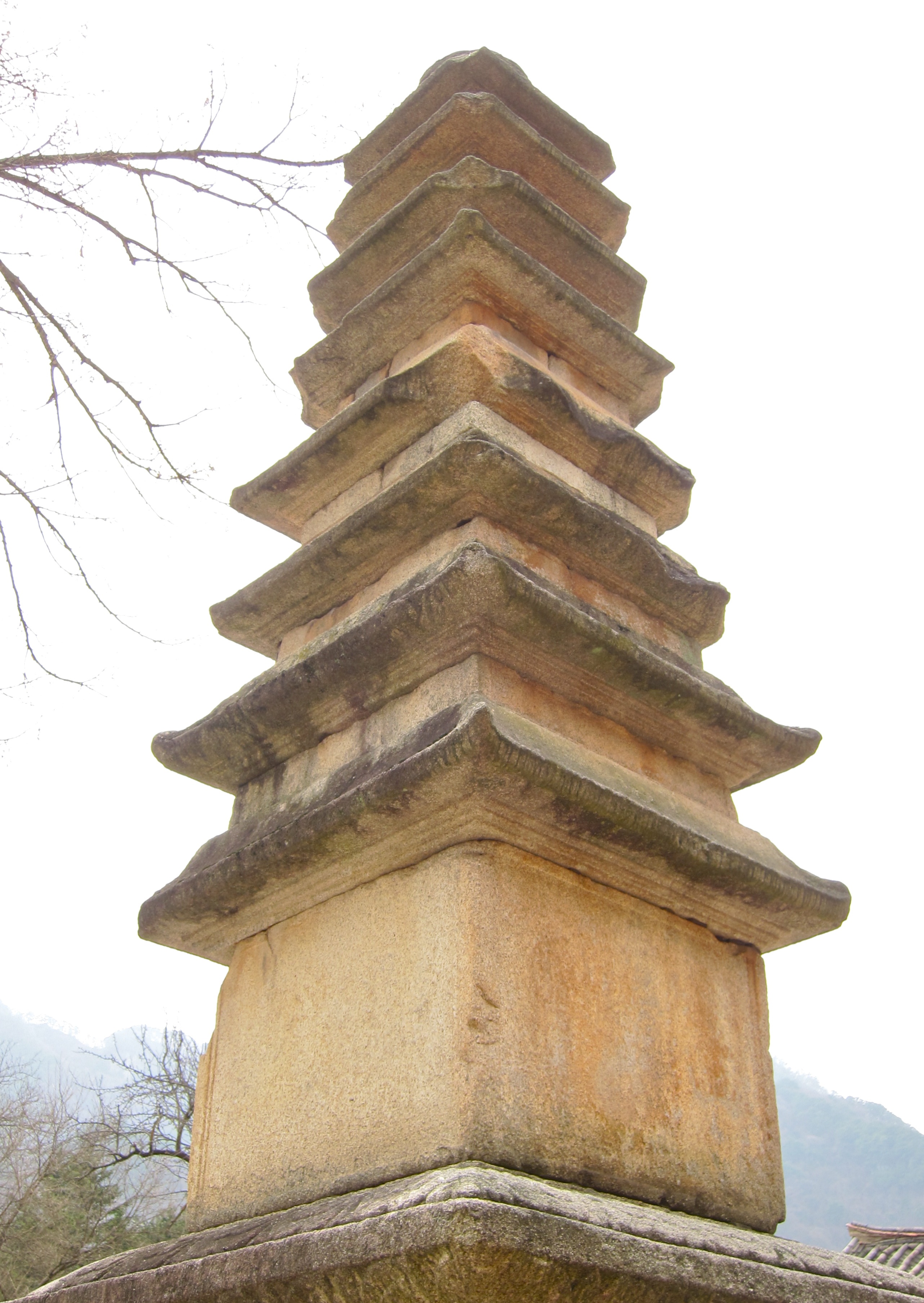|
Sungyang Academy
Sungyang Hall is a fourteenth-century Confucian academy located on the side of Mt. Janam in Kaesong, North Korea. The hall was constructed in the late fourteenth century for the home of the famously loyal statesman and Confucian scholar Chŏng Mong-ju, whose 1392 assassination by the agents of the later Taejo of Joseon marked the end of the Koryo dynasty. In 1573, the building was transformed into a Confucian academy. The building is listed as National Treasures #128 in North Korea. It is part of the Historic Monuments and Sites in Kaesong, which became a Unesco World Heritage site in 2013. See also *Chŏng Mong-ju *National Treasures of North Korea A National Treasure () is a tangible artifact, site, or building deemed by the Government of North Korea to have significant historical or artistic value to the country. History The first list of Korean cultural treasures was designated by Gover ... References {{WikidataCoord, display=title External linksSungyang HallKaeson ... [...More Info...] [...Related Items...] OR: [Wikipedia] [Google] [Baidu] |
Kaesong
Kaesong (, ; ) is a special city in the southern part of North Korea (formerly in North Hwanghae Province), and the capital of Korea during the Taebong kingdom and subsequent Goryeo dynasty. The city is near the Kaesong Industrial Region close to the border with South Korea and contains the remains of the Manwoldae palace. Called Songdo while it was the ancient capital of Goryeo, the city prospered as a trade centre that produced Korean ginseng. Kaesong now functions as North Korea's light industry centre. During the Japanese occupation from 1910 to 1945, the city was known by the Japanese pronunciation of its name, "Kaijō". Between 1945 and 1950, Kaesong was part of South Korea and under its control. During the Korean War, North Korea captured the city, and the 1953 Korean Armistice Agreement left the city under North Korean control. Due to the city's proximity to the border with South Korea, Kaesong has hosted cross-border economic exchanges between the two countrie ... [...More Info...] [...Related Items...] OR: [Wikipedia] [Google] [Baidu] |
North Korea
North Korea, officially the Democratic People's Republic of Korea (DPRK), is a country in East Asia. It constitutes the northern half of the Korea, Korean Peninsula and borders China and Russia to the north at the Yalu River, Yalu (Amnok) and Tumen River, Tumen rivers, and South Korea to the south at the Korean Demilitarized Zone, Korean Demilitarized Zone (DMZ). The country's western border is formed by the Yellow Sea, while its eastern border is defined by the Sea of Japan. North Korea, like South Korea, claims to be the sole legitimate government of the entire peninsula and List of islands of North Korea, adjacent islands. Pyongyang is the capital and largest city. The Korean Peninsula was first inhabited as early as the Lower Paleolithic period. Its Gojoseon, first kingdom was noted in Chinese records in the early 7th century BCE. Following the unification of the Three Kingdoms of Korea into Unified Silla, Silla and Balhae in the late 7th century, Korea was ruled by the G ... [...More Info...] [...Related Items...] OR: [Wikipedia] [Google] [Baidu] |
Chŏng Mong-ju
Chŏng Mong-ju (, January 13, 1337 – May 4, 1392), also known by his art name P'oŭn (), was a Korean statesman, diplomat, philosopher, poet, calligrapher and reformist of the Goryeo period. He was a major figure of opposition to the transition from the Goryeo (918–1392) to Joseon (1392–1897) periods. Being the last great personality from the late Goryeo period, exceptional in all aspects of academics, diplomacy, economics, military and politics, and trying to reform Goryeo while maintaining the declining kingdom, he opposed to the Goryeo general Yi Sŏng-gye (the first king of the future Joseon Dynasty) who was a radical revolutionary against the rotten Goryeo Dynasty. Due to his loyalty to Goryeo, Chŏng Mong-ju was eventually assassinated by five men of Yi Pang-wŏn (the fifth son of Yi Sŏng-gye and the third king of Joseon Dynasty). Biography Chŏng Mong-ju was born in Yeongcheon, Gyeongsang Province to a family from the Yeonil Jeong clan (). He was the eldest o ... [...More Info...] [...Related Items...] OR: [Wikipedia] [Google] [Baidu] |
Sonjuk Bridge
Sŏnjuk Bridge is a Koryo-dynasty stone bridge located in Kaesong, North Korea. Built in 1290, it is famous as the place where famed Confucian scholar and statesman Chŏng Mong-ju was assassinated, allegedly on the orders of the Yi Pang-wŏn, son of the first king of the Joseon Dynasty, Yi Sŏng-gye. It is also the bridge on which the forces of Yi Bang-won (later King Taejong) confronted the forces of Yi Bang-gan during the Second Princes' Rebellion. The bridge was closed to all traffic in 1780 and has since been a national monument. It is 8.35m long and 3.36m wide. It was originally named the Sonji Bridge, but was renamed Sonjuk Bridge after the assassination of Chŏng Mong-ju because bamboo grew where he was killed (''juk'' being the Korean word for bamboo). Assassination of Chŏng Mong-ju A famously loyal advisor to the king of Goryeo, Chŏng was a staunch political opponent of Yi Sŏng-gye. On his way home after a party held for him by the future king, he was ambush ... [...More Info...] [...Related Items...] OR: [Wikipedia] [Google] [Baidu] |
Taejo Of Joseon
Taejo (; 4 November 1335 – 27 June 1408), personal name Yi Seong-gye (), later Yi Dan (), was the founder and first monarch of the Joseon dynasty of Korea. After overthrowing the Goryeo dynasty, he ascended to the throne in 1392 and abdicated six years later during a strife between his sons. He was honored as Emperor Go () following the establishment of the Korean Empire. Taejo emphasized continuity over change. No new institutions were created, and no massive purges occurred during his reign. His new dynasty was largely dominated by the same ruling families and officials that had served the previous regime. He re-established amicable ties with Japan and improved relations with Ming dynasty, Ming China. Biography Early life The future King Taejo was born in Ssangseong Prefecture on the frontiers of the Yuan dynasty. Taejo's father was Yi Cha-ch'un, an official of Korean ethnicity serving the Mongols, Mongol-led Yuan. His mother, Queen Uihye, Lady Ch'oe, came from a famil ... [...More Info...] [...Related Items...] OR: [Wikipedia] [Google] [Baidu] |
Goryeo
Goryeo (; ) was a Korean state founded in 918, during a time of national division called the Later Three Kingdoms period, that unified and ruled the Korea, Korean Peninsula until the establishment of Joseon in 1392. Goryeo achieved what has been called a "true national unification" by Korean historians as it not only unified the Later Three Kingdoms but also incorporated much of the ruling class of the northern kingdom of Balhae, who had origins in Goguryeo of the earlier Three Kingdoms of Korea. According to Korean historians, it was during the Goryeo period that the individual identities of Goguryeo, Baekje and Silla were successfully merged into a single entity that became the basis of the modern-day Koreans, Korean identity. The name "Korea" is derived from the name of Goryeo, also romanized as Koryŏ, which was first used in the early 5th century by Goguryeo; Goryeo was a successor state to Later Goguryeo and Goguryeo. Throughout its existence, Goryeo, alongside Unified S ... [...More Info...] [...Related Items...] OR: [Wikipedia] [Google] [Baidu] |
Confucian
Confucianism, also known as Ruism or Ru classicism, is a system of thought and behavior originating in ancient China, and is variously described as a tradition, philosophy, religion, theory of government, or way of life. Founded by Confucius in the Hundred Schools of Thought era (c. 500 BCE), Confucianism integrates philosophy, ethics, and social governance, with a core focus on virtue, social harmony, and familial responsibility. Confucianism emphasizes virtue through self-cultivation and communal effort. Key virtues include '' ren'' (benevolence), '' yi'' (righteousness), '' li'' (propriety), '' zhi'' (wisdom), and '' xin'' (sincerity). These values, deeply tied to the notion of '' tian'' (heaven), present a worldview where human relationships and social order are manifestations of sacred moral principles.. While Confucianism does not emphasize an omnipotent deity, it upholds ''tian'' as a transcendent moral order. Confucius regarded himself as a transmitter of cultura ... [...More Info...] [...Related Items...] OR: [Wikipedia] [Google] [Baidu] |
National Treasures Of North Korea
A National Treasure () is a tangible artifact, site, or building deemed by the Government of North Korea to have significant historical or artistic value to the country. History The first list of Korean cultural treasures was designated by Governor-General of Korea in 1938 during the Korea under Japanese rule, Japanese occupation with "The Act of Treasures of the Joseon dynasty". Nos. 1-50 Nos. 51-100 Nos. 101-150 Nos. 151-193 See also * Cultural assets of North Korea * Natural monuments of North Korea * National Treasure (South Korea) * Complex of Koguryo Tombs * History of Korea * Culture of Korea * List of World Heritage Sites in Asia#North Korea (1) Footnotes References * http://www.kcpia.or.kr/kcpia_mail/mail_template.php?menu=4&filetype=view&index_key=20 {{Webarchive, url=https://web.archive.org/web/20110722140935/http://www.kcpia.or.kr/kcpia_mail/mail_template.php?menu=4&filetype=view&index_key=20 , date=2011-07-22 * http://cafe.naver.com/historyexam.cafe ... [...More Info...] [...Related Items...] OR: [Wikipedia] [Google] [Baidu] |
Historic Monuments And Sites In Kaesong
Historic Monuments and Sites in Kaesong is a UNESCO World Heritage Site in Kaesong, North Korea. The site consists of 12 separate components, which together testify to the history and culture of the Koryo Dynasty from the 10th to 14th centuries. The geomantic layout of the former capital city of Kaesong, its palaces, institutions and tomb complex, defensive walls and gates embody the political, cultural, philosophical and spiritual values of a crucial era in the region's history. The monuments inscribed also include an astronomical and meteorological observatory, two schools (including one dedicated to educating national officials) and commemorative steles. The site testifies to the transition from Buddhism to neo-Confucianism in East Asia and to the assimilation of the cultural, spiritual, and political values of the states that existed prior to Korea's unification under the Koryo Dynasty. The integration of Buddhist, Confucian, Taoist and geomantic concepts is manifest in the plan ... [...More Info...] [...Related Items...] OR: [Wikipedia] [Google] [Baidu] |
National Treasures Of North Korea
A National Treasure () is a tangible artifact, site, or building deemed by the Government of North Korea to have significant historical or artistic value to the country. History The first list of Korean cultural treasures was designated by Governor-General of Korea in 1938 during the Korea under Japanese rule, Japanese occupation with "The Act of Treasures of the Joseon dynasty". Nos. 1-50 Nos. 51-100 Nos. 101-150 Nos. 151-193 See also * Cultural assets of North Korea * Natural monuments of North Korea * National Treasure (South Korea) * Complex of Koguryo Tombs * History of Korea * Culture of Korea * List of World Heritage Sites in Asia#North Korea (1) Footnotes References * http://www.kcpia.or.kr/kcpia_mail/mail_template.php?menu=4&filetype=view&index_key=20 {{Webarchive, url=https://web.archive.org/web/20110722140935/http://www.kcpia.or.kr/kcpia_mail/mail_template.php?menu=4&filetype=view&index_key=20 , date=2011-07-22 * http://cafe.naver.com/historyexam.cafe ... [...More Info...] [...Related Items...] OR: [Wikipedia] [Google] [Baidu] |
World Heritage Sites In North Korea
The world is the totality of entities, the whole of reality, or everything that exists. The nature of the world has been conceptualized differently in different fields. Some conceptions see the world as unique, while others talk of a "plurality of worlds". Some treat the world as one simple object, while others analyze the world as a complex made up of parts. In scientific cosmology, the world or universe is commonly defined as "the totality of all space and time; all that is, has been, and will be". Theories of modality talk of possible worlds as complete and consistent ways how things could have been. Phenomenology, starting from the horizon of co-given objects present in the periphery of every experience, defines the world as the biggest horizon, or the "horizon of all horizons". In philosophy of mind, the world is contrasted with the mind as that which is represented by the mind. Theology conceptualizes the world in relation to God, for example, as God's creation, ... [...More Info...] [...Related Items...] OR: [Wikipedia] [Google] [Baidu] |







